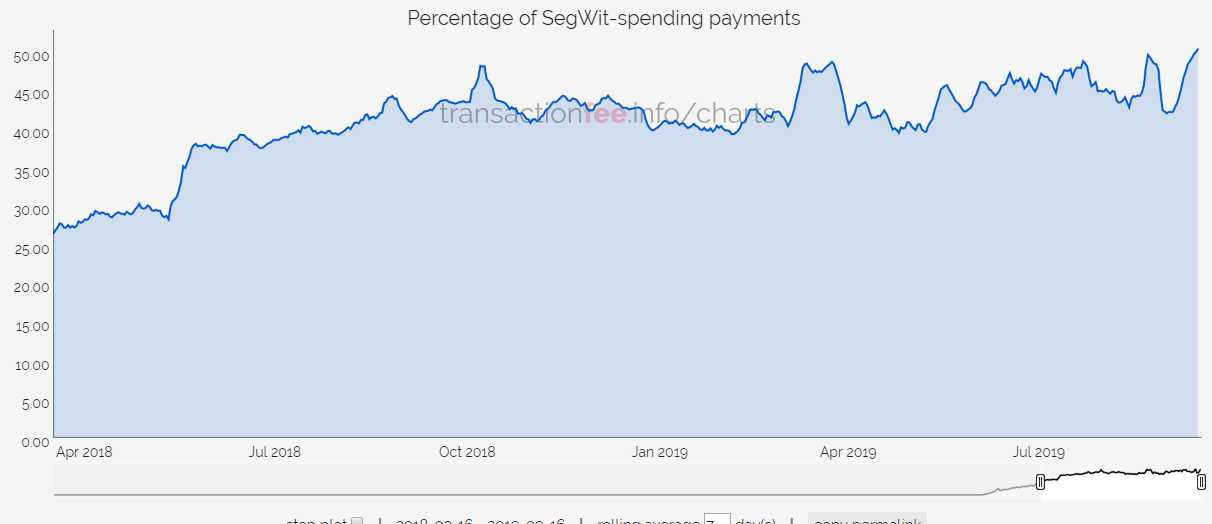Bitcoin scaling solution "SegWit" reaches all-time high adoption rate

Due to the slow transaction speed of Bitcoin, various scaling solutions have been proposed, and one of them, Segregated Witness (SegWit), reached a historical high adoption rate of 50.47% on September 15th.
Table of Contents
Segregated Witness, abbreviated as SegWit, is a protocol proposed by Blockstream co-founder and core developer Pieter Wiulle in December 2015.
The protocol segregates the "digital signature" of each transaction from the transaction data, allowing each Bitcoin block of 1MB to accommodate more data, thus reducing transaction fees and addressing the issue of slow transaction speeds in Bitcoin.
The protocol was officially launched on August 23, 2017, and prior to the beginning of this year, the adoption rate of SegWit was lower compared to the Bitcoin blockchain itself.
According to transaction fee data platform transactionfee, Bitcoin transactions using this protocol accounted for only 40.55% on January 1, 2019. It is noteworthy that this has grown by 24.46% in the past nine months.

Despite reaching a historical high in adoption rate, SegWit has yet to attract mainstream cryptocurrency exchanges to switch to the SegWit network. Major trading platforms with a large user base are not averse to paying higher transaction fees. Exchanges such as Binance, BitMEX, and Bittrex have not yet supported SegWit.
A report indicated that the SegWit protocol is currently supported by only a few exchanges. In July of this year, OKEx announced support for SegWit addresses for Bitcoin and Litecoin on its platform, making Gemini the first mainstream exchange to support the protocol.
In contrast to the positive news about SegWit, another Bitcoin scaling solution, the Lightning Network, has experienced security vulnerabilities, initially disclosed by Blockstream developer Rusty Russell publicly.
Lightning Labs also tweeted a reminder to users to immediately upgrade their node software and warned against placing too many assets on the Lightning channels.
Please upgrade to the latest versions, as they are not at risk. These are:
• lnd 0.7.1
• c-lightning 0.7.1
• eclair 0.3.1— Lightning Labs⚡️🍠 (@lightning) September 10, 2019
ABM previously provided detailed coverage of the Lightning Network and since its launch last year, the solution's usage rate has seen significant growth. The number of Lightning payment channels has reached around 3,2500, further enabling Bitcoin to become a viable option for daily payments.
Related Reading
- Institutional Funds Flowing into CME Bitcoin Futures Trading, Is It a Good Thing?
- Bitcoin Donations Frozen for 3 Weeks, Hong Kong Free Press Slams: Never Use BitPay Again
Join now to receive the most comprehensive information on fintech, blockchain innovations, and industry examples!
Related
- After the Federal Reserve's interest rate cut, Ether outperforms Bitcoin.
- Mining company Cathedra Bitcoin transforms into a data center, following MicroStrategy in dollar-cost averaging Bitcoin.
- MicroStrategy issues new stocks to buy Bitcoin, holding over 240,000 BTC, with unrealized gains of $5.3 billion.